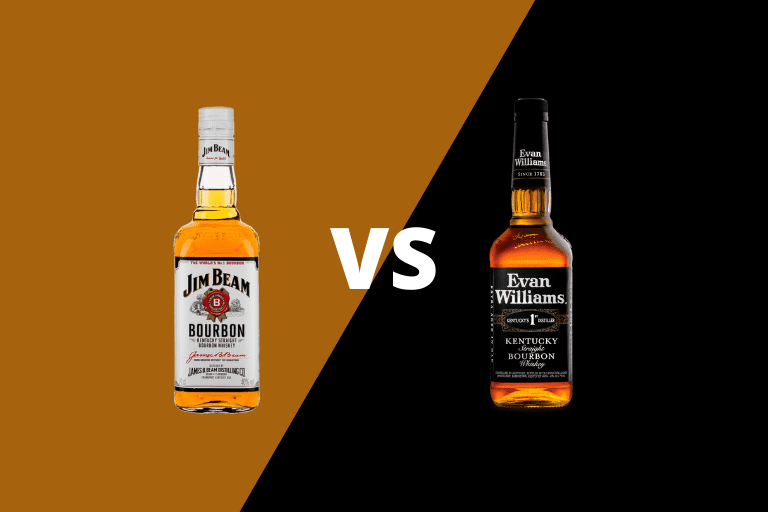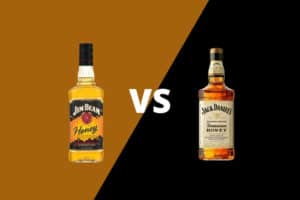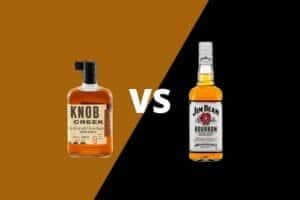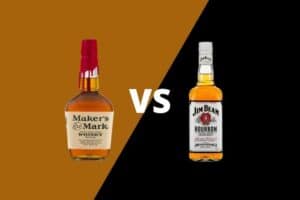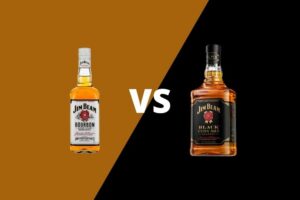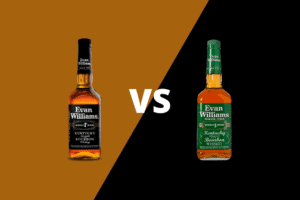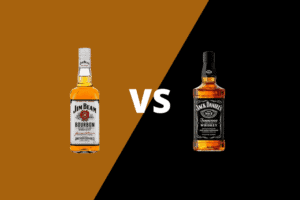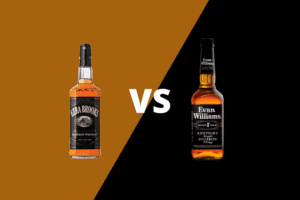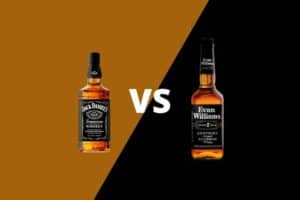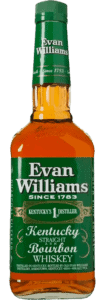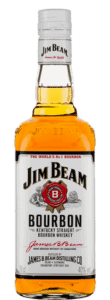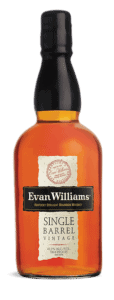Set your DVR.
In many ways, Jim Beam vs Evan Williams is the ultimate bourbon heavyweight matchup.
In terms of volume, these are the two top-selling brands in the bourbon category. Both brands are well recognized throughout North America and continue to make inroads abroad in the top European and Asian markets.
In fact, because of their popularity, availability and low retail prices, many well-seasoned bourbon drinkers have already tried one or both of these great bourbons during their travels. But if you are new to the wonderful world of bourbon, or are a bartender, cocktail enthusiast or retail buyer looking to learn about two products that punch out of their weight classes, you’ve come to the right place.
So pull up a chair, pour yourself a glass and let’s take a look at these two heavyweight brands.
Table of Contents
Round 1: History
Evan Williams touts a history that goes back to 1783, when Evan Williams founded his distillery in Kentucky. In fact, the words “Kentucky’s 1st Distiller” are emblazoned on the front label — but it’s a claim that is hotly contested. However, the Evan Williams Bourbon offering we’re familiar with today was first introduced to the American market in 1957.
Jim Beam promotes a brand history that dates back to 1779. The Beam family might be one of the most well-respected in Kentucky, with seven generations actively distilling in the state. The brand is named after James B. Beam, who resurrected distilling operations in 1943 after Prohibition ended.
Round 1 is a draw. Both brands have extensive pre and post-Prohibition histories that reflect the region’s world-renowned distilling tradition.
Round 2: Ownership
Jim Beam is owned by Beam-Suntory, the converged entity that represents Chicago-based Beam Inc., and the Tokyo-based Suntory. Beam-Suntory has an impressive stable of American whiskeys, including the full Jim Beam line, Knob Creek, Maker’s Mark, Baker’s and Basil Haden’s, among others. In terms of sales volume, Jim Beam White Label is the No. 1-selling bourbon brand.
Evan Williams is owned by international spirits producer Heaven Hill. Based in Bardstown, Kentucky, this well-respected American whiskey producer owns a number of well-known brands, including Elijah Craig, Mellow Corn, Larceny, Old Fitzgerald and Rittenhouse. Evan Williams is known as the No. 2-selling bourbon brand, following the industry-leading Jim Beam.
As standard expressions, both brands benefit from the strength of their stablemates. By sharing the same facilities and rickhouses as their more expensive ‘cousins,’ these workhorses are able to offer a lot of flavor — especially when you consider their relatively low price points. They are a popular choice for bartenders and bar managers looking to make great cocktails with a spirit that offers higher margins.
Round 2 is ruled a tie. Both of these brands didn’t get where they are today without the hard work, skill and support of very successful organizations that are very good at making bourbon.
Round 3: Mash Bills
In order to use the word ‘Bourbon’ on the label, a whiskey must be made in the United States using at least 51 percent corn in the mashbill — or mash ingredients. This describes the list of grains used to produce alcohol during fermentation.
Both Evan Williams and Jim Beam use a mash bill that contains about three-quarters corn, with the remainder split between malted barley and rye. This mash bill allows for a bold, spicy flavor attributed to the use of rye grain.
Round 4: Maturation
Neither of these whiskeys contain an age statement on the label. Each is designated a ‘Kentucky Straight Bourbon Whiskey,’ which means the spirit was legally required to mature for at least two years in new charred American oak barrels.
Let’s take a moment to talk about rickhouses — the barrel warehouses used to store whiskey while it matures.
Beam Inc. and Heaven Hill are both maturing thousands of barrels at any given time. The large, multi-storied wooden rickhouses preferred by Kentucky whiskey distillers allow the cold winters and warm, humid summers to affect the spirit slumbering inside the barrels. It also means each master blender has his or her favorite ‘sweet spots’ where the combination of temperature, humidity and environment means the barrels resting there end up especially tasty.
The sheer production numbers of these brands — and the skill and dedication of the whiskey makers —means they are able to meet customer demand while also maintaining a recognizable flavor profile batch after batch and year after year.
Round 5: Distillation & Production
Jim Beam is made at the Jim Beam Distillery in Clermont, Kentucky.
Evan Williams is distilled at Heaven Hill’s Bernheim Distillery in Louisville, Kentucky.
As the Heaven Hill and Beam-Suntory portfolios’ backbone brands, these two brands pump out a lot of whiskey. They both utilize modern distillation and production techniques, including column distillation, to meet demand.
As a sour batch whiskey, Evan Williams uses a portion of terminal mash from a previous fermentation to begin the next mash.
Each of these brands is made at an excellent bourbon distillery.
Round 6: Price Point & Value
Evan Williams is about $15 for a 750mL bottle. It is bottled at 90-proof, or 45 percent alcohol by volume.
Jim Beam’s suggested retail price is about $18 for a 750mL bottle, and is bottled at 80-proof, or 40 percent ABV.
The lower price-point and higher bottling proof of Evan Williams makes it especially attractive to bartenders and bar managers looking to build profitable drinks for cocktail programs — or anyone who is into a good deal.
Round 7: Tasting Notes
Jim Beam
Nose: Floral aromas with raisins, followed by notes of leather and tobacco.
Palate: Balanced new oak flavors with corn, chocolate, black pepper, tobacco and hints of vanilla.
Finish: Sweet honey notes with vanilla and toasted almonds.
[Related: Complete Jim Beam Bourbon Review]
Evan Williams
Nose: Oak, vanilla, baking spices and leather, with a corn sweetness.
Palate: Stone fruits, baking spices, honey and buttery caramel.
Finish: Butterscotch, a touch of spice from the rye grain, and a peppery spice.
[Related: Complete Evan Williams Bourbon Review]
Verdict…
As with all bourbon matchups, it all comes down to personal taste.
Each of these brands are flavorful enough to meet the needs of your preferred drinking style. Whether you are a seasoned bourbon lover looking to enjoy the robust palate of a well-matured bourbon or a mixologist looking to their next cocktail creation, both of these brands will live up to your expectations. And, if you’re a budding bourbon drinker on a budget, these prices offer a great introductory course into the category.

